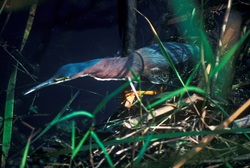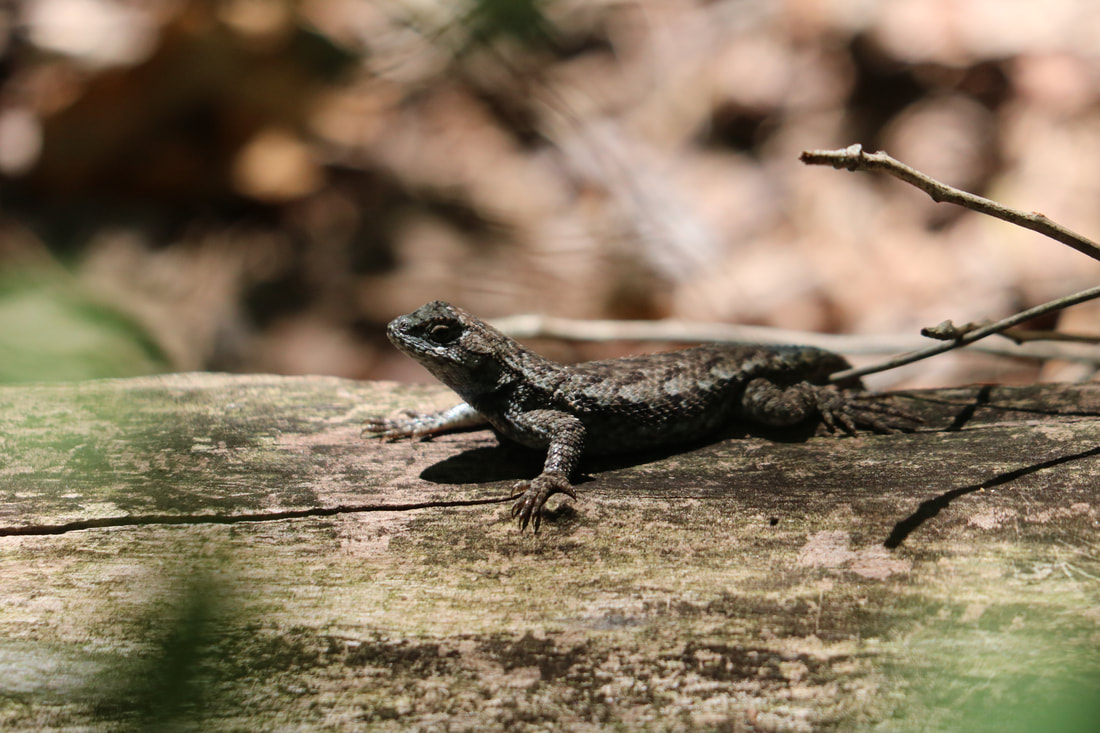
(another entry from my journal of ten years ago)
Warm and Foggy
It was one of those days when the air warmed after a brief cold snap. Wisps of fog drifted about, adding an air of mystery to the landscape. The fog shrouded the land with a vagueness that made objects hard to identify at a distance until they “popped” into view with clarity of form and color. This was my third visit to the levee in a week, and each day was unique.
The smells and sounds seemed to hang in the air, magnified as sounds are when one cups a hand behind an ear, or as sounds must have been by an old time ear trumpet. The marsh smelled of the rich scent that marks the decay of plants and other living matter, and promises fertile growth in the coming spring.
As I walked down the gravel path, the call note of a towhee, years ago known as the ground robin, reached my ears. I could clearly identify the bird, even though I saw neither beak nor feather. Likewise, I heard the call of a killdeer as I approached the first turn. The killdeer was observed, but not seen.
Having noted the presence of towhee and killdeer, I rounded the first bend of the walkway and noticed three small birds perched on an overhead wire in the distance. These birds gave no song or call, and in the dim light I could not be certain of their identity, although they were the shape and size of bluebirds. After a few more steps, I gazed at them again with binoculars. The blue back, red breast and white belly of the eastern bluebird were clearly visible. These bluebirds shone through the misty morning as beautifully as the dew sparkles when the sun burns away the morning mist.
Beyond the bluebirds, the open area on the left was dry. The mud flat was gone, waiting for the renewal brought by more rain. To the right, willows surrounded the large pond, a glassy panorama. The willows presented a bright green contrast to the surrounding fall landscape. The ducks and geese floated motionless on the mirrored surface, impossible to identify from this distance.
A Red-shouldered Hawk perched on the central dead snag, where it displaced the resident Belted Kingfisher from its customary perch. As I approached the second bend in the walkway, the hawk lifted off and glided to the shore on my left, where it disappeared into the tall grass, perhaps to dine on some hapless mouse or even a grasshopper.
Soon I rounded the bend, and walked along the shore where the hawk had disappeared. The ducks were now closer and I could resolve identifiable images with my binoculars. They included the expected Mallard Ducks, Gadwall, and Green-winged Teal, but no Northern Shovelers.
Just as I had identified these ducks, the Red-shouldered Hawk flew out from the levee, almost under my feet, but three or four yards below. With motionless wings it crossed the pond to alight in a distant tree and resume sentry duty.
Only after I had ceased following the hawk with my eyes did I notice the muskrat swimming parallel to the shore. Muskrats are secretive animals, and my observations of them have always been accidental rather than planned. I have never seen a muskrat when I intentionally went looking for them, and my attempts to photograph them have been wholly unsuccessful.
Today, the muskrat was either in a mood to be seen, or was heedless of my presence on the misty levee above its home. It kept pace with me, and swam vigorously enough to leave a substantial wake behind, until we nearly reached the narrow creek that lacks sufficient slope to drain the pond. It disappeared into the marshy grasses on the opposite shore.
I frequently encounter other visitors to the levee, the many walkers or joggers who use this space for physical exercise and weight loss, and occasionally one is disposed to stop and talk. Among these, a few have mentioned seeing otters in the pond, but on closer inspection of their stories, I am always certain that they actually encountered a muskrat.
Muskrats and beavers are rodents with the characteristic buck teeth, while the River Otter is a member of the weasel family, related to ferrets, skunks, wolverines, and long tailed weasels, to name only a few of their kin. They are shy animals even more rarely observed than muskrats.
I recall my last opportunity to view otters at a pond in Rhode Island many years ago. They swam and played in plain view of a large crowd, not exhibiting their characteristic shy behavior.
I once tracked a River Otter through the snowy New Hampshire countryside, only to see the tracks disappear in a slide into an ice covered creek. This marsh is a more suitable home for muskrats and beavers than otters.
The creek beyond the pond is a heaven for Mallard Ducks, swimming and courting in anticipation of spring. Green-winged Teal and a solitary American Black Duck have also settled into this protected waterway, as well as a small flock of Northern Pintail. Some Ring-necked Ducks were there also, two males and two females.
The return trip to my truck included an encounter with the resident Belted Kingfisher, back at its usual perch, now that the Red-shouldered Hawk was gone. As I approached, the bird left its perch and flew straight for the opposite shore, giving its rattling call the whole way. As I passed the final corner of the pond, the Red-shouldered Hawk sat in the tallest tree silently surveying the landscape below.
Another Red-shouldered Hawk sat on a fence post at the edge of the horse pasture opposite the marsh. It descended to the ground, perhaps in search of a mouse or grasshopper and immediately returned to its perch. This ritual was repeated three times as I approached, and then, when I was too close, the hawk flew to another post, perhaps twenty feet more distant. Down to the ground and back up, and down again the bird swooped.
I was uncertain; was the bird capturing insects or was it hunting mice? Was I witnessing one missed opportunity after another? Young raptors take time to learn the art of hunting. They are just catching on at this season, when suddenly the number of prey animals is declining. In the scheme of nature, prey animals reproduce early in the spring and throughout the summer, at just the time when parent hawks are hunting overtime to feed their young. Their hunting keeps the prey species in check, and prevents overpopulation by mice, rats, chipmunks, squirrels, and other small mammals.
Then the fall season arrives, and the production of prey animals declines. The underdeveloped hunting skill of newly fledged raptors collides with declining prey density. Many of the young hawks will starve, and not survive until another plentiful spring. Many succumb to hunger and begin to hunt roadsides, taking advantage of the easy pickings of maimed and road killed prey, sometimes becoming road kill themselves. Only the best adapted will survive, but those who do may live several years and leave many descendants.

 RSS Feed
RSS Feed